|
Bill Gates warned against denying climate change and pushed for more innovation in clean energy, during an event Friday at Columbia University in New York. USA TODAY — The billionaire philanthropist and Microsoft co-founder joined friend and fellow billionaire Warren Buffett for a question-and-answer session with students.
“Certain topics are so complicated like climate change that to really get a broad understanding is a bit difficult and particularly when people take that complexity and create uncertainty about it,” Gates said. The planet needs to find reliable, cheap and clean energy, "the innovations there will be profound," Gates said In December, Gates announced that he and a group of investors would invest more than $1 billion in Breakthrough Energy Ventures, a fund that aims to finance the development of affordable energy that will reduce global greenhouse-gas emissions. Despite not knowing what the Trump administration’s goal will be in terms of funding for research and foreign aid, Gates said he holds hope for the future. He said artificial intelligence is the new frontier in innovation and said that if he were a student today he would pursue computer science or biology. Venture capitalism and the willingness to take chances on something new has provided a great deal of opportunity in the U.S., Gates said. “That’s something that other countries have tried to duplicate and they have, in small part, but not nearly as well,” Gates said about the availability of investment capital for projects. “This willingness to take risks, the idea that if you ... fail, it’s not a mark of shame."
0 Comments
We’re already well into a new era. But many regulators and policymakers don’t act like it. GREENTECH MEDIA — Debates about the future of America’s electricity system have long centered on a binary choice between lowering costs or decreasing pollution. But that has changed. In many parts of the country, new renewables are simply the cheapest resource. This economic evolution has taken on new importance for regulators and utilities under the Trump administration’s expected “all-of-the-above” approach to energy policy, and could ensure that clean energy continues to grow in a market-based policy setting. Financial advisory and asset management firm Lazard’s 10th annual report on the levelized cost of energy (LCOE) for different electricity-generating technologies shows renewables are the cheapest available sources of electricity (other than efficiency) even without subsidies -- a trend confirmed by similar analyses of wind and solar costs from Lawrence Berkeley National Laboratory. With subsidies, in some places new wind is even cheaper than the short-term marginal costs of existing fossil-fueled plants, raising new questions about whether these plants should be retired early. What does "levelized cost of energy" mean? Lazard’s LCOE analysis identifies how much each unit of electricity (measured in megawatt-hours) costs to generate over a power plant’s lifetime. LCOE represents every cost component -- capital and financing expenditures to build; operations and maintenance; and fuel costs -- spread out over the total lifetime megawatt-hours generated. Because different plants have different operating characteristics and cost components, LCOE represents the best way to fairly compare different technologies. Think of it evenly comparing apples to oranges. How wind and solar are winning the day According to Lazard, today’s wind costs are one-third what they were in 2009, falling from $140 per megawatt-hour to $47 per megawatt-hour in just seven years. Lazard’s cost estimates are consistent with reported prices of contracts for wind, with several wind contracts in the low $20s and high $10s. However, these numbers don’t tell the whole story. Though wind power is the cheapest it’s ever been, wind costs were well below their 2009 peak in the early to mid-2000s, mostly due to low labor and commodity prices, and they vary widely depending on regional wind resources -- from the low $30s in the Great Plains region and Texas to the $60s in California and the Northeast. Utility-scale solar’s cost declines have been even more dramatic, falling 85 percent since 2009 to today’s range of $46 to $61 per megawatt-hour. Lawrence Berkeley National Lab confirms Lazard’s solar costs in a compilation of 2014-2015 solar prices, with several contracts coming in well below $40 per megawatt-hour, taking advantage of the 30 percent federal Investment Tax Credit. Like wind, insolation varies by region. For example, very little solar gets built in the Northeast where the same solar plant only generates 68 percent of what it would generate in the Southwest and California at similar cost. As old plants retire, utilities should compare wind and solar with the cheapest form of new conventional fuel-fired generation today -- natural-gas-fired combined cycle power plants with LCOE ranges from $48 to $78 per megawatt-hour. Lawrence Berkeley National Lab confirms Lazard’s solar costs in a compilation of 2014-2015 solar prices, with several contracts coming in well below $40 per megawatt-hour, taking advantage of the 30 percent federal Investment Tax Credit. Like wind, insolation varies by region. For example, very little solar gets built in the Northeast where the same solar plant only generates 68 percent of what it would generate in the Southwest and California at similar cost. As old plants retire, utilities should compare wind and solar with the cheapest form of new conventional fuel-fired generation today -- natural-gas-fired combined cycle power plants with LCOE ranges from $48 to $78 per megawatt-hour. The case for wind and solar as the grid’s cheapest resources becomes even clearer when federal subsidies are considered: Tax credits drive renewable energy’s costs down to $17 to $47 per megawatt-hour for wind and $37 to $49 per megawatt-hour for solar. The all-in price of wind is not only cheaper than building new natural-gas plants in most of the country -- new wind beats some fossil fuel power plants on their marginal cost (i.e,. costs for operating, maintaining, fueling, etc.) alone. In other words, it’s now cheaper in a significant number of places to build new wind than simply continuing to operate an existing coal and nuclear plant. And all-in costs for solar are not far behind. This precipitous drop in wind and solar prices means utilities and their regulators need to keep up on the latest numbers, or else they’ll be driving blind when deciding on investments in new infrastructure and whether existing plants should be retired.
How can this impact overall system costs? Like any generation technology, wind and solar impact overall system dynamics, including which resources and infrastructure are needed as complements. But claims about integration costs of variable resources like wind and solar are often overstated. A recent National Oceanic and Atmospheric Administration (NOAA) study used high-quality, granular hourly weather data to find complementary wind and solar resources and considered the outcomes of linking them with a national high-voltage direct current (HVDC) transmission backbone. NOAA found 80 percent zero-carbon generation, including over 50 percent wind and solar, could provide reliable service at lower cost than today’s power mix by 2030 without increasing hydro or battery storage capacity. It turns out Lazard’s cost numbers already approach the lowest-cost assumptions from the NOAA study, meaning NOAA’s most generous assumptions about cost declines by 2030 are nearly a reality in 2017. For example, in its “low renewable high gas cost” scenario, NOAA used $1.19/watt for solar’s capital plus O&M costs. In Lazard’s recent report, solar capital plus O&M costs have already fallen to $1.44 to $1.59 in 2016. This highlights the need for models and the policymakers that use them to ensure cost data is up to date. Failure to do so could lock in hundreds of billions of investment in uneconomic natural-gas infrastructure. The costs of integrating high shares of wind and solar become much higher without the HVDC backbone, as resource-poor regions can’t access the windiest and sunniest (and thus cheapest) places to generate wind and solar power. Costly, drawn-out processes for siting transmission and power plants and allocating costs of multi-state transmission lines further drive up project costs and stifle investment. (Policymakers can turn to America’s Power Plan for recommendations on streamlining the siting process and limiting local impacts to reduce siting costs for renewables.) How should policymakers and utilities use these new numbers? Even with these new numbers, more natural-gas plants are being built every week, expensive coal is not retiring as fast as economics would dictate, and the transition to renewable energy isn’t happening fast enough to prevent the worst effects of climate change. Two misconceptions limit renewable energy deployment even in the face of wind and solar’s drastic cost declines: 1) misguided alarmism about the reliability of renewables, and 2) misconceptions of the cost of running the grid with more renewables. Managing America’s grid with variable renewables also requires rethinking how we operate and plan our electricity systems to provide reliable service, and many utilities and wholesale markets have been slow to adapt. Grid operators sometimes claim we need to back up solar and wind with an equal ratio of thermal generators or storage for “when the sun doesn’t shine and the wind doesn’t blow,” but the NOAA study shows additional transmission and better regional coordination can do it much more cheaply. A National Renewable Energy Laboratory (NREL) analysis corroborates NOAA’s findings, showing we could quadruple the amount of wind and solar on the grid today without reliability issues. Besides reliability, many argue wind and solar come with insurmountable integration costs, including backup generation and transmission lines to connect remote locations to the grid. While this is true, estimates of wind integration costs generally fall within a modest $2 to $7 per megawatt-hour range, even at high penetrations. Variations in integration cost studies reflect the difficulty of attributing integration costs to any one technology across a big grid, where a diverse mix of power generation linked by robust transmission naturally smooths variability -- much like an index fund versus a single volatile stock, for example. Conventional thermal generation like natural gas, coal, and nuclear power also require new transmission, fuel supply and storage, and large backup reserves. These can also be counted as “integration costs,” even without accounting for the health and climate costs of carbon dioxide and other pollution, which can exceed $25 per megawatt-hour for natural gas, and $60 per megawatt-hour for coal. A new paradigm Transitioning our electricity sector away from fossil fuels is no longer just an environmental imperative -- it’s an economic one. Free markets now favor solar and wind. Consider gas-rich Texas, which has more than three times more wind capacity than any other state, and where solar is expected to grow 400 percent by 2022. Outdated policies and data render us unprepared to take full advantage of wind and solar’s rapid cost declines. Failure to adapt to rapidly changing cost numbers will result in uneconomic investments locking in emissions. For America to compete in the energy innovation race, it’s time to adopt a paradigm where wind and solar form the backbone of our electricity grid. Trillion dollar opportunities don't come along often, but there's one hiding in plain sight. THE MOTLEY FOOL — Every hour of every day, enough solar energy reaches earth to replace all energy consumed in a year combined. Every drop of oil, every piece of coal, and every cubic foot of natural gas; trillions of dollars of economic value hits the earth every hour. If we could capture just a small percentage, a measly 0.03% of the solar energy hitting the world each year, we could be using clean, home-grown energy, not only in the U.S., but around the world. And the companies that can exploit this resource have the chance to upend a multi-trillion dollar industry, something so revolutionary it may only happen once every few generations. And it creates the biggest investment opportunity I think we'll see in any of our lifetimes. The power of solar energy It's hard to state just how big the potential for renewable energy -- and solar energy in particular -- is around the world. And if the political will is there it would be easy to make an incredibly large impact on the energy industry over the next decade. Today, wind and solar power are both cheaper than electricity from new fossil fuel plants, and there's an abundance of land in little-utilized locations like deserts, open fields, and oceans where renewable power could be generated. For the solar industry, energy production can even be put on rooftops that are otherwise un-utilized around the world. We're already seeing how cost effective solar energy is in countries around the world. TeslaMotors' (NASDAQ:TSLA) solar division SolarCity is built on selling rooftop solar as a cost savings tool for customers. First Solar (NASDAQ:FSLR) and SunPower (NASDAQ:SPWR) are bidding on energy contracts around the world that compete directly with fossil fuels. And with bids now below 4 cents per kWh, they're winning over traditional energy sources. From a cost basis, solar energy is now competitive, that much is clear. And solar energy is such a small percentage of energy production, providing 1% of electricity demand in 2016, that it has a lot of growth ahead. A multi-trillion dollar opportunity I think it's important to dive into the numbers a little bit to show just how big the opportunity is for solar energy, so this next section may get a little weedsy. The U.S. Energy Information Administration estimates that global energy consumption will pass 600 quadrillion BTUs before 2020, or in electricity terms 175.8 billion MWh. To show the upside potential for solar energy, let's look at how much solar power production there would have to be to meet 100% of the energy market's demands. If a solar power plant can generate its full nameplate capacity 25% of the time, known as the capacity factor, there would need to be 80,274 GW of solar power production installed around the world. In 2016, global solar installations were around 70 GW, and cumulative installations globally are now about 300 GW installed, a tiny fraction of energy consumption worldwide. To illustrate the potential solar power could have, if we assume we want to get all of our energy from solar and a solar power plant lasts 30 years, you would have to install 2,676 GW every year to transition the world to solar energy. To accomplish this, the global solar industry would have to grow 35x from its size in 2016. Put another way, the solar industry could grow installations 30% every single year and it would still take nearly 14 years to reach a rate of 2,676 GW per year. And that figure doesn't even assume any growth. By 2040, the IEA predicts annual energy consumption will be 815 quadrillion BTUs. To fill that gap between 815 quadrillion BTUs and the 600 quadrillion BTU figure I used to calculate the figures above a total of 28,800 GW of solar energy would need to be installed, or about 410x what was installed in 2016. It may sound absurd that solar energy could provide all of our energy needs, but it may not be all that crazy. Nearly half of the world's energy consumption is electricity, and the major use of oil -- transportation -- is starting to be disrupted by electric vehicles. Cheap and abundant solar could provide a greater percentage of energy needs as the world electrifies and transitions away from fossil fuels. The opportunity for solar is worth trillions of dollars, a huge chance for the companies who grab any significant part of the market. Why solar profits will go up as the industry grows I've laid out how incredibly big the solar industry's potential is, but right now it may be hard to draw a line from the hyper competitive industry we see today to a profitable growth industry. But this is where the dynamics are changing. Solar energy bids have long struggled to be competitive with fossil fuels and companies have had to fight each other to win contracts. Combine that with rapid cost reduction and you have manufacturers and developers killing each other just to gain market share. But we're getting to the point where solar energy is starting to compete with existing energy sources, opening up bigger markets without the same price competition. And as solar energy passes coal, nuclear, and natural gas on the cost curve it doesn't have to lower bid prices as quickly to maintain competitive. This should allow developers and manufacturers to slowly expand margins as they cut costs. When you add in new innovations like short and long-term energy storage and it's possible that solar power plants will be built to provide a base load source of electricity to the grid, something that's only been dreamed about in the renewable industry until recently. Why the investing opportunity is so big Hopefully, it's easy to see why the growth opportunity is enormous, both from a volume of installation perspective and also from a dollar perspective. As solar energy beats the cost of coal, natural gas, and oil as an energy source, it would make sense that the profits and value of solar companies would go up. But the market hasn't displayed that potential yet. The chart below shows the market caps of three of the largest solar companies in the world, First Solar, Canadian Solar (NASDAQ:CSIQ), and SunPower, compared to ExxonMobil and Royal Dutch Shell. You can see the oil giants are worth over 100x more than the solar companies. If we ballpark solar energy from a revenue perspective, the opportunity is equally impressive. Bloomberg New Energy Finance estimated that $287 billion was invested in all of clean energy in 2016, including wind, solar, hydro, and other sources. If the 2,676 GW investment figure I outlined above ends up being true and solar installations costs are $0.80 per watt (about a 30% reduction from today) the total value of installations alone would be about $2.1 trillion.
It's impossible to predict how much solar stocks will rise over the next few decades, but the opportunity for the industry is easily in the trillions of dollars annually. I think it's clear that solar energy is the biggest investment opportunity of our lifetimes. Bigger than computers, bigger than the internet, solar energy could change the world forever. And the companies that can take a significant amount of market share could become the new energy giants, replacing the oil giants we know today. The last state to join the union is currently number one in the pursuit of renewable energy. GLOBAL CITIZEN — The Hawaii legislature is considering a bill that would require all ground transportation in the Aloha state to run on renewable energy by the year 2045.
The bill is part of a greater effort at achieving 100 percent renewable energy within the state, i.e. from solar, wind, and geothermal sources. The Hawaiian Clean Energy Initiative website claims that by achieving 100 percent renewable energy, the state could save $3 billion on imported oil, reduce the state’s dependence on tourism and the military, and attract businesses as a leader in energy innovation. And it’s good for the environment. Hawaii is extremely vulnerable to climate change as rising sea levels will cause flooding and coastal erosion, thus destroying its infrastructure, scenic beaches and crippling its tourism industry. At the same time, rising temperatures will reduce the archipelago’s freshwater and threaten its ecosystems as demonstrated by coral bleaching. Last July, Governor David Ige signed into law a bill (HB623) requiring that by 2045, 100 percent of the state’s electricity must be produced by renewable methods. When it comes to automobiles, Jeff Mikulina, executive director of the non-profit BluePlanet who helped legislators with the bill, believes solar power is the solution: “Essentially, we’ll have batteries on wheels that can serve to smooth the load on the [electric] grid,” he told FastCoExist. “We have a surplus of solar energy during the day, and you can go to work and plug in and suck up that excess solar during the day when your car’s just parked. Then at night, you could go home and plug in and share that excess energy when we need it most, which is evening in Hawaii.” Efforts at promoting solar power on other states have been far less successful. In Nevada, for instance, the state’s Public Utilities Commission ended a “net metering” policy, allowing homeowners with solar panels to sell excess electricity to the utility at retail value. What was once a booming market for solar panel installation has stalled as a result. On a federal level, last November the Obama Administration announced it would be expanding the nation’s electric vehicle (EV) charging infrastructure and, in tandem with the Department of Transportation, establishing designated EV routes spanning 25,000 miles across 35 states. Like Hawaii’s latest effort, the program is designed to, “combat climate change, increase access to clean energy technologies, and reduce our dependence on foreign oil.” Five days into Donald Trump’s presidency, it appears the new administration is punting on such efforts at developing renewable sources of energy, instead opting to further invest in fossil fuels. On Tuesday, Trump signed executive orders facilitating the advancement of the Keystone XL and Dakota Access pipelines, which had been denied construction permits by the Obama Administration. Officials in Hawaii say that the 100 percent renewable energy mark could actually be achieved by 2040. If other government follow their lead we could say aloha to a new, sustainable future with clean air and water. If not, we’ll be saying aloha to our planet. Most Americans know that climate change is real and that something should be done about it, but they seem to want someone else to do it—usually, the government. In the wake of the 2016 election, what was always true should be abundantly clear: government won’t solve the problem of climate change. FORBES — That leaves us. Fortunately, there are lots of things we can do ourselves. I’ve listed nine of them below. They might look like small things, but they are powerful things.
Sometimes we may feel powerless to transform the transportation, energy and industrial sectors ourselves, and so we want some omnipotent being to do it for us. But while we’re feeling powerless, are we overlooking personal actions that can further our goals? The Powers That Be may not heed our protests, read our letters, listen to our environmental groups, but they can’t stop us from taking back the dollars we inadvertently contribute to their polluting economy every year. Here is a list of simple actions that work: 1. Eat less meat. The share of greenhouse gas emissions from animal agriculture is usually pegged at 14.5 percent to 18 percent, but the Worldwatch Institute found lots of oversights in those calculations that, when properly counted, bring the ag contribution all the way up to 51 percent. That, you’ll notice, is more than half. Which means that after we clean up all the transportation, energy, industry and commerce in the world, we’ve done less than half the job. The other half is meat and dairy. Refuse to eat it. If this seems too challenging, consider giving it up one day a week. It will still be the most important action you can take. 2. Eat organic when you can. Organic food is good for us because we’re not putting pesticides in our bodies, but organic food is also grown without synthetic fertilizers, most of which begin as byproducts of oil refining. When you buy a conventional apple, you’re giving a little boost to Big Oil. 3. Buy local when you can. I’m not talking about patronizing mom and pop stores, although that may have its own merit; I’m talking about buying locally-manufactured products made with locally-sourced materials. This goes for food too, with home organic gardening as a local ideal. To the extent that we minimize transportation of goods, we mitigate climate change. 4. Live in the climate. The biggest residential demand on our dirty energy system is climate control—home heating and cooling. We travel from our air conditioned homes to our air conditioned workplaces in air conditioned cars. Of course, we need climate control to protect us from freezing temperatures in winter and soaring temperatures in summer, but do we need the atmosphere to be exactly 70 degrees everywhere we go, all year long? Let’s use climate control only for the extremes. When temperatures are moderate, live in the climate we evolved to inhabit. 5. Vote with your feet. Every time you drive a car, you vote for the car. Every time you ride a bike, you vote for the bike. You vote economically in the fuel you purchase—or don’t—but you also vote pragmatically. These days, transportation departments keep meticulous track of road usage and transit trips. Where there are a lot of bicyclists, bicycle infrastructure is more likely to get support. Where there are a lot of pedestrians, most transportation departments will try to make streets safer and friendlier for people, not cars. 6. Reduce and reuse before recycle. Recycling emerged as a virtue before we knew we had a climate problem, and it turns out that transporting and processing materials for recycling is carbon intensive. Recycling still uses less energy than making new products from scratch, but reducing and reusing are even cleaner. 7. Offset your carbon emissions. After we’ve done everything above, we’ll still be responsible for some unavoidable emissions until our society cleans up its act. It only cost me $35 to offset my carbon emissions for 2016, which included some airline flights. The United Nations has made offsetting easy, cheap, and reliable, and you decide where the money goes—mine went to solar water heaters in India, inhibiting the spread of conventional water heaters there. Calculate and offset your emissions at climateneutralnow.org 8. Invest in solar energy. Because solar panels rely exclusively on the energy of the sun, it neutralizes your home’s carbon footprint. As a bonus, currently it’s projected that families will save tens of thousands of dollars by switching to solar panels as their primary home energy source. U.S. solar employs more workers than any other energy industry, including coal, oil, and natural gas combined, according to the U.S. Department of Energy's second annual U.S. Energy and Employment Report. ECOWATCH — 6.4 million Americans now work in the energy and energy efficiency sectors, which added more than 300,000 net new jobs in 2016, or 14 percent of the nation's job growth. "This report verifies the dynamic role that our energy technologies and infrastructure play in a 21st century economy," said DOE Senior Advisor on Industrial and Economic Policy David Foster. "Whether producing natural gas or solar power at increasingly lower prices or reducing our consumption of energy through smart grids and fuel efficient vehicles, energy innovation is proving itself as the important driver of economic growth in America, producing 14 percent of the new jobs in 2016." The solar industry is particularly shining bright. "Proportionally, solar employment accounts for the largest share of workers in the Electric Power Generation sector," the report, released on Jan. 13, states. "This is largely due to the construction related to the significant buildout of new solar generation capacity." Overall, the U.S. solar workforce increased 25 percent in 2016 According to the report, the solar industry employed almost 374,000 workers in 2016, or 43 percent of the Electric Power Generation workforce. This is followed by fossil fuels, which accounts for 22 percent of total Electric Power Generation employment, or 187,117 workers across coal, oil, and natural gas generation technologies. Wind generation is seeing growth in employment with a 32 percent increase since 2015. The wind industry provides the third largest share of Electric Power Generation employment with 102,000 workers at wind farms across the nation. Electric power generation employment by technology. U.S. Department of Energy The reason behind this growth in the solar sector is due to the high capacity additions in both distributed and utility-scale photovoltaic solar, the report said. In fact, construction and installation projects represented the largest share of solar jobs, with almost four in ten workers doing this kind of work, followed by workers in solar wholesale trade, manufacturing and professional services.
In a sign of promise for the booming industry, solar employers reported that they expect to increase employment by 7 percent this year. Solar is becoming the cheapest form of electricity production in the world, according to statistics from Bloomberg New Energy Finance. Last year was the first time that the renewable energy technology out-performed fossil fuels on a large scale. If you’re not paying attention to what’s going on in energy, you should. We’ve seen this movie before. Spoiler alert: There’s massive economic opportunity ahead.
TECHCRUNCH — How massive? Imagine standing in 1992, knowing that Google, Akamai, Netflix, Facebook, Amazon, eBay, BuzzFeed and Uber lay ahead. This time it’s the “enernet,” not the internet, that will transform our lives. The story is the same, though the players have changed. Here’s the tee up. Across the country, incumbent network providers operate highly centralized networks in their respective cities. Then, scrappy local outfits start serving the market with innovative, distributed technology. These startups create competition, and a new network emerges atop the legacy network. That was the backdrop 30 years ago when a little thing called the internet emerged. Startups like CompuServe, AOL, EarthLink, Netcom and a host of other local ISPs kicked off the conversion from analog to digital by offering internet access over existing cable and telco networks. Today, the actors are SolarCity, Sunrun and a host of others moving us off fossil fuels and into clean energy supported by smart equipment, services and software, offered atop existing utility networks. This time, it’s the enernet. Enernet. Noun. A dynamic, distributed, redundant and multi-participant energy network built around clean energy generation, storage and delivery and serving as the foundation for smart cities. Jigar Shah, founder of SunEdison, seeded the enernet revolution more than a decade ago. He devised a breakthrough financing model that made solar affordable and scalable. He’s the Marc Andreessen of this storyline… seminal, smart and strategic. Today, watch Elon Musk. He presented new solar roof shingles to the world a few months ago. Solar that’s affordable and attractive. Plus, he’s integrating it into a game-changing home system with storage and EV charging. Think the world’s first iPhone. Musk’s electric car company, Tesla, is poised to be an enernet giant, the Amazon of this go-around — margin-challenged in its early years, but set to move. It goes well beyond Tesla. There is a long list of enernet innovators now emerging. They are building nanogrids, microgrids, distributed energy resources and virtual power plants. They are creating new, intelligent building materials and smart lighting. They are deploying new networks and intelligence that are driving down costs and improving services. At heart, the enernet is the foundation for smart-city tech, including the “Internet of Things,” distributed systems, interconnected backbones and networking technologies, EV-charging services and autonomous vehicles, to name a few. These technologies will drive dramatic change and force us to rethink our cities, municipal services and sectors like transportation, insurance, real estate and financial services. From the enernet evolution will come smart cities that are an order-of-magnitude smarter, healthier and safer. The new network will also present quantum leaps in energy security and emergency resilience that can stand in the face of superstorms or cyberattacks. Hold onto your seats. We’re at the early stages of something immense. Still, I hear the seeds of fear and doubt. There is an oft-cited refrain that the transition will cost a lot and take a long time. That’s absolutely silly. We don’t look back at the internet transformation from analog to digital and think, “Wow, that was slow and cost a ton of money. We should have stuck with the typewriter and landline.” Fact is, it was blazingly fast and driven by those who understood the spend as leveraged investment, not cost center. Likewise, the move to clean energy will seem fast and prudent as solar and energy storage continue to scale, smart cities accelerate and prices continue their fall. I also hear “the utilities are in big trouble.” Let’s not be simplistic. Google didn’t kill Comcast. Comcast is doing just fine. The utilities that own transmission and distribution networks (the wires companies) have enormous value and opportunity ahead. There is no way that the transition happens without the participation of these companies, and there is considerable economic upside ahead for them. Forward-thinking utilities — Consolidated Edison, National Grid and others — see what’s coming and are poised to thrive in the enernet world. Sure, fossil-fuel generators and suppliers have challenges ahead, just like the content companies were challenged by newer, more flexible, cost-effective content producers. It’ll be up to the management teams at these companies to de-risk the future with intelligent investment and acquisitions. Hats off to folks like David Crane, a visionary who worked to drive that transition at NRG Energy. We will see more of that type of leadership again over the next 10 years as market dynamics shift and outcomes become more obvious and urgent to the incumbents. That said, enernet innovation, like innovation in every other sector, is unlikely to originate from within the incumbents. If you don’t believe me, read books like The Innovator’s Dilemma by Clayton Christensen or this article from Accenture that asserts “corporate innovation does not work.” Unless a Lou Gerstner or Steve Jobs is at the helm of an incumbent, innovation will be acquired, not grown. This backdrop presents incredible opportunity for startups and early investors in the space. I’m excited to be part of that, and I hope that talented entrepreneurs turn their attention from the app economy to the enernet. There’s enormous upside. As I said, we’ve seen this movie. Let’s stop acting surprised, and instead start acting. An economic powerhouse awaits the United States. We’ll be thankful we chose to become a worldwide enernet leader, as this evolution creates a new kind of healthy, robust economy. Marking another milestone for a changing planet, scientists reported on Wednesday that the Earth reached its highest temperature on record in 2016, trouncing a record set only a year earlier, which beat one set in 2014. It is the first time in the modern era of global warming data that temperatures have blown past the previous record three years in a row. THE NEW YORK TIMES — The Earth is heating up, a point long beyond serious scientific dispute, but one becoming more evident as the records keep falling. Temperatures are heading toward levels that many experts believe will pose a profound threat to both the natural world and to human civilization.
In 2015 and 2016, the planetary warming was intensified by the weather pattern known as El Niño, in which the Pacific Ocean released a huge burst of energy and water vapor into the atmosphere. But the bigger factor in setting the records was the long-term trend of rising temperatures, which scientists say is being driven by increasing levels of carbon dioxide and other greenhouse gases. “A single warm year is something of a curiosity,” said Deke Arndt, chief of global climate monitoring for the National Oceanic and Atmospheric Administration. “It’s really the trend, and the fact that we’re punching at the ceiling every year now, that is the real indicator that we’re undergoing big changes.” The heat extremes were especially pervasive in the Arctic, with temperatures in the fall running 20 to 30 degrees Fahrenheit above normal across large stretches of the Arctic Ocean. Sea ice in that region has been in precipitous decline for years, and Arctic communities are already wrestling with enormous problems, such as rapid coastal erosion, caused by the changing climate. “What’s going on in the Arctic is really very impressive; this year was ridiculously off the chart,” said Gavin A. Schmidt, head of the Goddard Institute for Space Studies in Manhattan, a unit of the National Aeronautics and Space Administration that tracks global temperatures. But Arctic people were hardly alone in feeling the heat. Drought and starvation afflicted Africa. On May 19, the people in the town of Phalodi lived through the hottest day in the recorded history of India, 123.8 degrees Fahrenheit. El Niño has now ended, and climate scientists almost universally expect 2017 to be cooler than the year before. But the scale of the heat burst has been startling to many of the experts, and some of them fear an accelerated era of global warming could be at hand over the next few years. Even at current temperatures, billions of tons of land ice are melting or sliding into the ocean. The sea is also absorbing most of the heat trapped by human emissions. Those factors are causing the ocean to rise at what appears to be an accelerating pace, and coastal communities in the United States are beginning to spend billions to fight increased tidal flooding. Their pleas for help from Congress have largely been ignored. The finding that a record had been set for the third year in a row was released on Wednesday by three government agencies, two of them American and one British, that track measurements made by ships, buoys and land-based weather stations. They analyze the figures to correct for known problems, producing an annual average temperature for the surface of the Earth. The national meteorological agency of Japan confirmed the findings in a preliminary analysis. In the British data set, 2016 set a record by only a small amount; the margin was larger in the NOAA data set and larger still in NASA’s. NASA does more work than the other groups to take full account of Arctic temperatures, and several scientists said they believed the NASA record to be the most accurate for 2016 for that reason. NASA’s calculations suggested that the planet had warmed by well over a half-degree Fahrenheit from 2013 to 2016. That is a huge change for the surface of an entire planet to undergo in just three years, and it appears to be the largest temperature increase over a three-year period in the NASA record, which begins in 1880. The findings about a record-warm year were also confirmed by the Berkeley Earth surface temperature project, a nonprofit California group set up to provide a temperature analysis independent of governments. That group, however, did not find that three records had been set in a row; in its analysis, 2010 was slightly warmer than 2014. In addition to the surface measurements, satellites are used to measure the temperature of the atmosphere within a few miles of the surface. Two groups that analyze these figures showed a record-warm 2016 in data going back to 1978, though in one data set it was a record by only a small margin. Since 1880, NOAA’s records show only one other instance when global temperature records were set three years in a row: in 1939, 1940 and 1941. The Earth has warmed so much in recent decades, however, that 1941 now ranks as only the 37th-warmest year on record. The modern era of global warming began around 1970, after a long stretch of relatively flat temperatures, and the past three years mark the first time in that period that three records were set in a row. Of the 17 hottest years on record, 16 have now occurred since 2000. Two of the agencies that issued Wednesday’s figures, NOAA and NASA, will soon report to cabinet secretaries appointed by President-elect Donald J. Trump, who has expressed doubt about the findings of climate science. In 2012, Mr. Trump wrote on Twitter, “The concept of global warming was created by and for the Chinese in order to make U.S. manufacturing noncompetitive.” Fear has erupted within the agencies about whether their data will now be subject to political manipulation. Mr. Trump and his cabinet nominees have given no detailed indication of what their broad climate policies are likely to be, much less how they will manage the scientific enterprise of monitoring the climate. Since he was elected president, Mr. Trump has acknowledged there may be “some connectivity” between human activity and climate change, and he promised to keep an open mind on the subject. On Wednesday, in questioning before the Senate Environment and Public Works Committee, Mr. Trump’s nominee to lead the Environmental Protection Agency, Scott Pruitt, said, “I do not believe that climate change is a hoax.” The three record-setting years in a row undercut longstanding claims by a handful of contrarian scientists that global warming stopped after 1998. That argument was never backed by good statistical evidence, but it was highlighted repeatedly in Congress and on the presidential campaign trail in 2016. When the heat buildup in the ocean is taken into account, global temperatures are rising relentlessly. Scientists have calculated that the heat accumulating throughout the Earth because of human emissions is roughly equal to the energy that would be released by 400,000 Hiroshima atomic bombs exploding across the planet every day. It is true that at the Earth’s surface, the warming seems to be proceeding in fits and starts. “The arc of global warming will be variously steep and less steep,” said Richard Seager, a climate scientist at the Lamont-Doherty Earth Observatory of Columbia University. “It never stopped.” In fact, the rate over time has been reasonably close to predictions that scientists first offered decades ago. Those same scientists have long warned that humanity is courting disaster by failing to bring fossil-fuel emissions under control. For example, many experts on sea level believe that a rise of 15 or 20 feet has already become inevitable, though they cannot say how fast it will happen. A rise that large would drown most of the world’s coastal cities without heroic efforts to fortify them. The United States and the world as a whole must reduce its greenhouse gas emissions by 80 percent or more by 2050 in order to significantly reduce the risks posed by unabated climate change. Intensifying droughts and heat waves, inundation of coastal economies brought on by sea level rise, and increasing wildfires and extreme weather events across the United States are only some of those intensifying risks. WORLD RESOURCES INSTITUTE — While an 80 percent reduction may sound like a Herculean task, a new report from the Risky Business Project with analysis from the World Resources Institute, From Risk to Return: Investing in a Clean Energy Economy, finds that achieving that reduction is both technically and economically feasible — and creates a huge business opportunity. In reducing the country’s emissions and capitalizing on the clean energy transition, the United States needs to move from its heavy dependence on fossil fuels towards wide-scale use of electricity wherever possible — and generate that electricity from low- and zero-carbon sources of energy, such as wind and solar. Doing so has to be done with energy efficiency as a pillar of this change — making more out of less. So how much would all of this cost? We would need to invest an average of about $320 billion a year from 2020 to 2050, but the benefits would far outweigh these costs. For example, we would see returns in the form of:
Average annual additional capital investments and change in fuel expenditures by decade. How do we get there? The new report presents three pillars for how to transition to a clean energy economy: 1. Use electricity instead of fossil fuels. This includes a gradual transition to electric cars; switching to electric heat pumps and water heaters in our buildings; and converting more industrial processes to use electricity instead of burning fossil fuels. We can also use electricity to produce clean-burning hydrogen for transportation and industry. 2. Generate electricity from low- and zero-carbon sources. The cost of renewable electricity has dropped dramatically in the past decade, paving the way for rapid expansion of zero-carbon sources such as solar and wind energy. Nuclear power also can play a role, along with technologies that capture and safely store carbon emissions from fossil fuel plants. 3. Use all energy more efficiently. We can get more "work" — or greater output — from each unit of energy we use by applying the most efficient technologies in our vehicles, buildings and factories. The new Risky Business analysis shows that achieving the 80 percent emissions reduction is possible with technologies that are already commercial or near-commercially available. We have the tools now to get there, and we’re bound to see additional breakthroughs in the future to make the job even easier Three pillars of a clean energy economy: strategies and metrics.
What’s needed from business and government? While the wheels of a clean, low carbon economy in the United States are already in motion, we have to see its acceleration in order to avoid the dangerous and damaging risks from climate change. Given a clear and consistent policy and regulatory framework from government, businesses can make a clean energy economy a reality. That framework must send a clear, consistent and long-term market signal on the necessity of climate action, and provide incentives for innovation and deployment of clean energy systems. In the past, transformative investments in railroads, rural electricity, interstate highways, telecommunications and other industries have unleashed a wave of innovation and growth for American business. We need a new wave of transformative investment in this century aimed at securing a safe and stable climate. As this report shows, investing in clean energy can ensure American economic security and competitiveness for decades to come. But we must act now. With nearly one million solar energy systems installed on residential rooftops across the country, buying or selling a solar home is getting more and more common. Just like a renovated kitchen or a finished basement increases a home’s value, solar has been shown to boost home valuation and shorten a home’s time on the market
|
James Ramos,BPII'm your go to solar energy expert here to guide you step-by-step through all of your solar options. Categories |
James The Solar Energy Expert

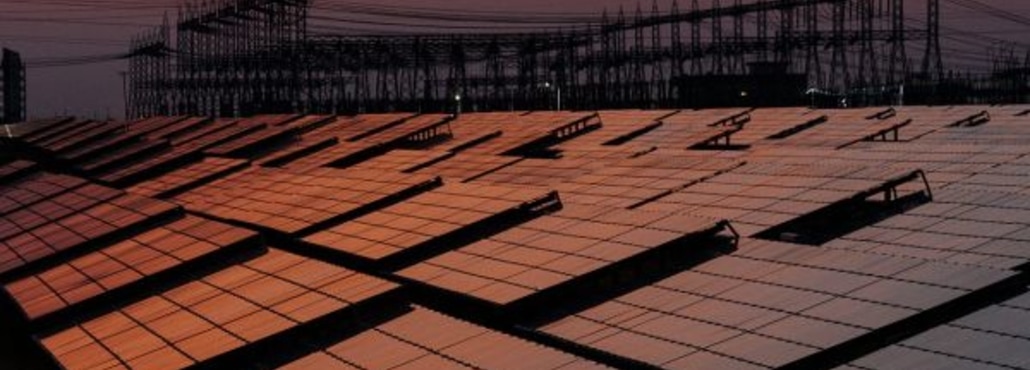
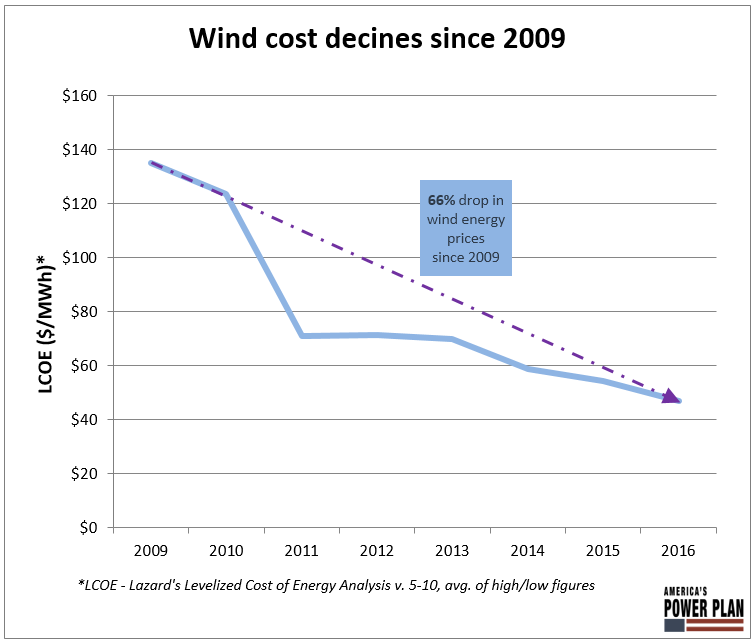
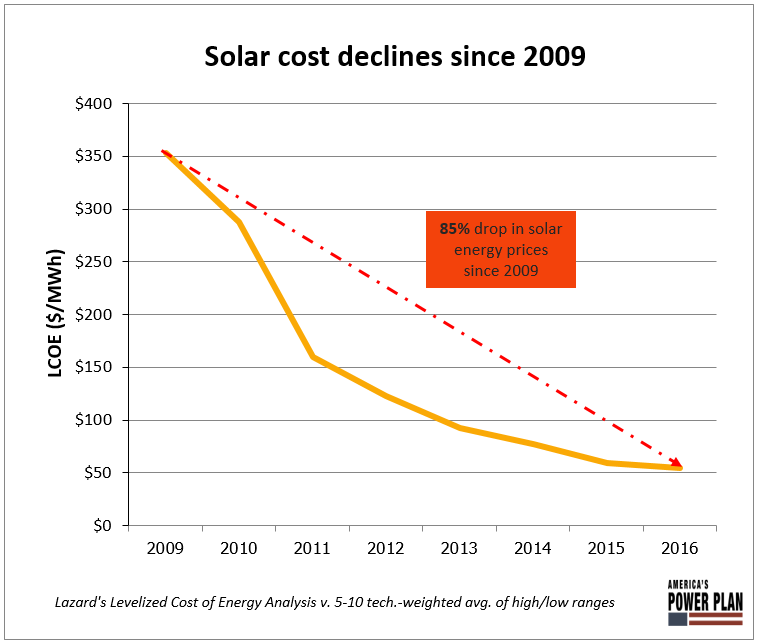
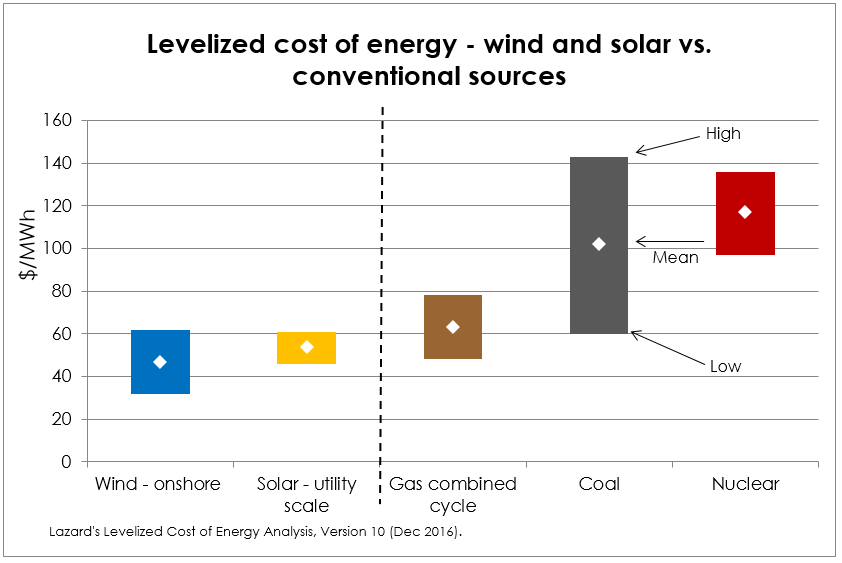


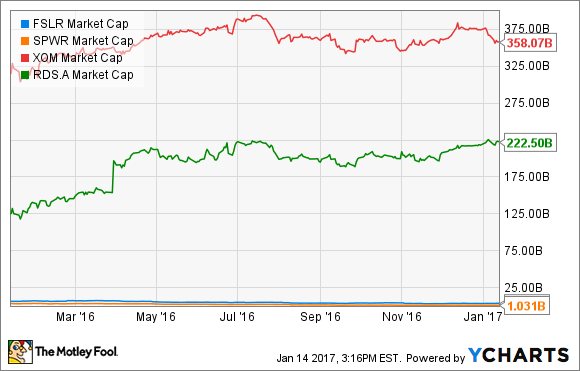


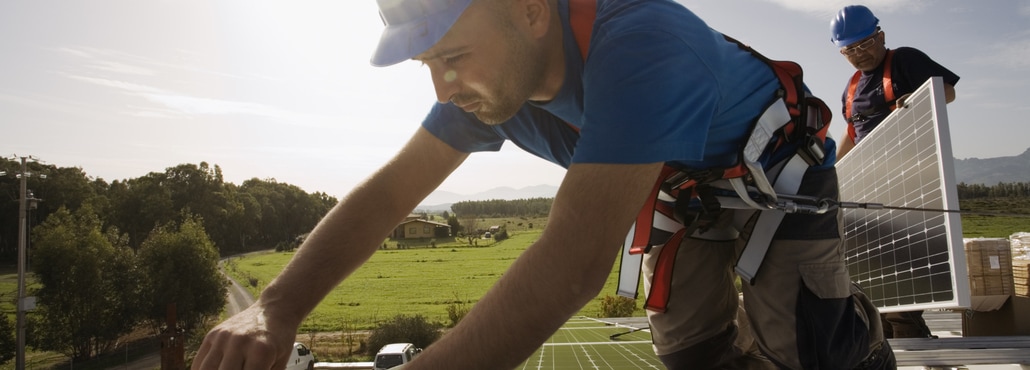
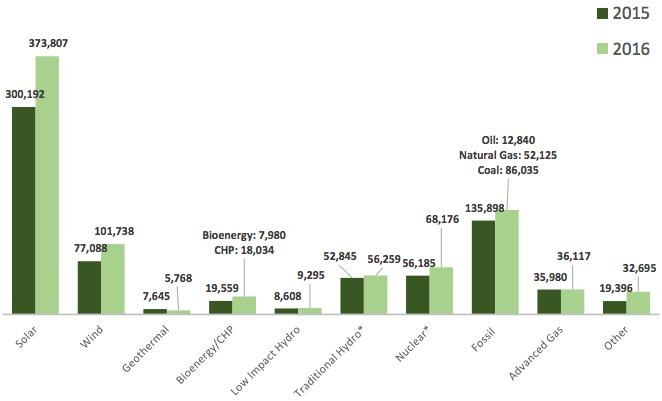
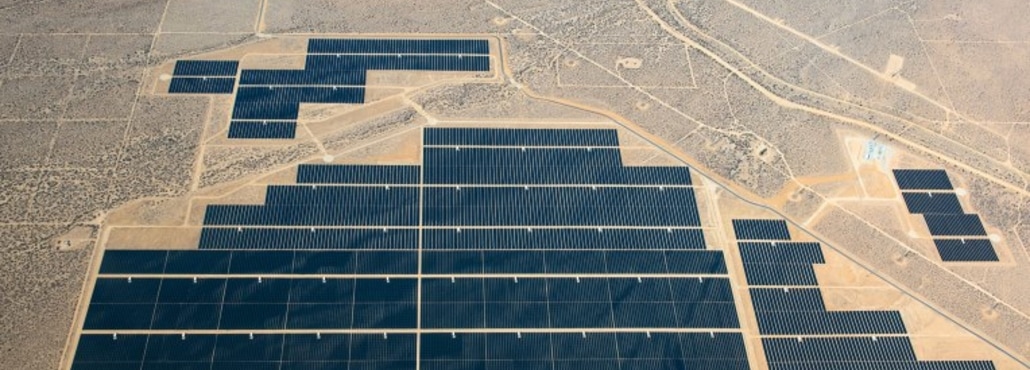

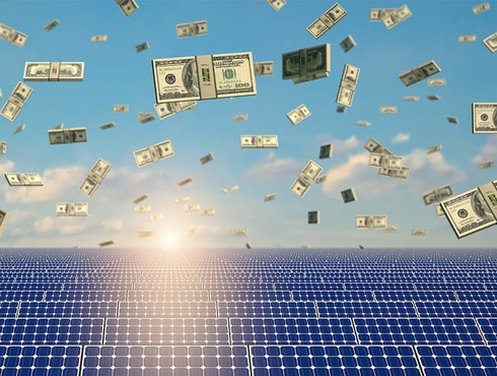
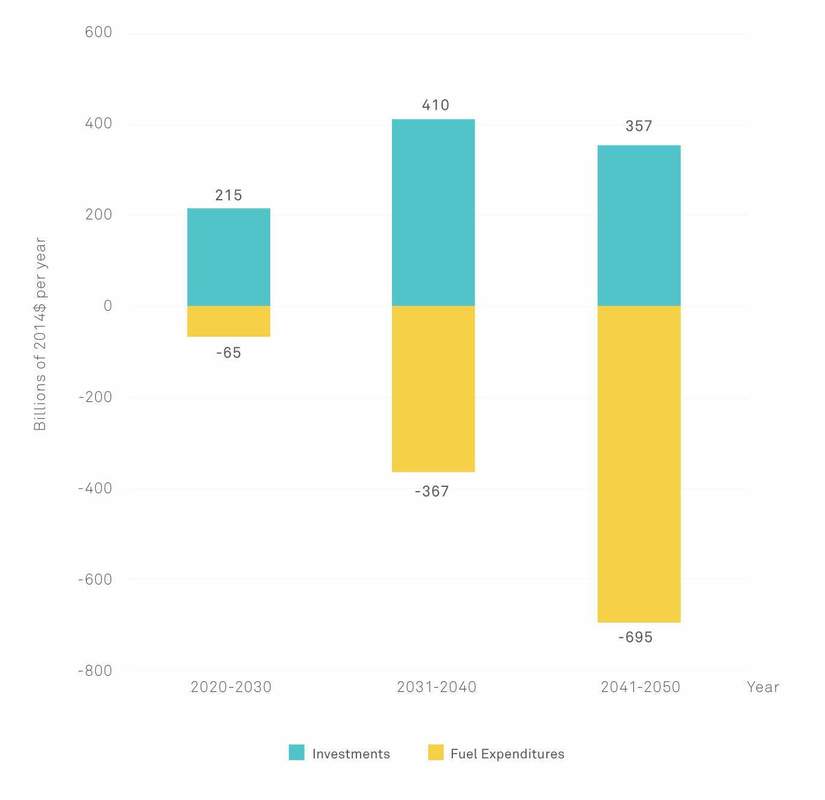
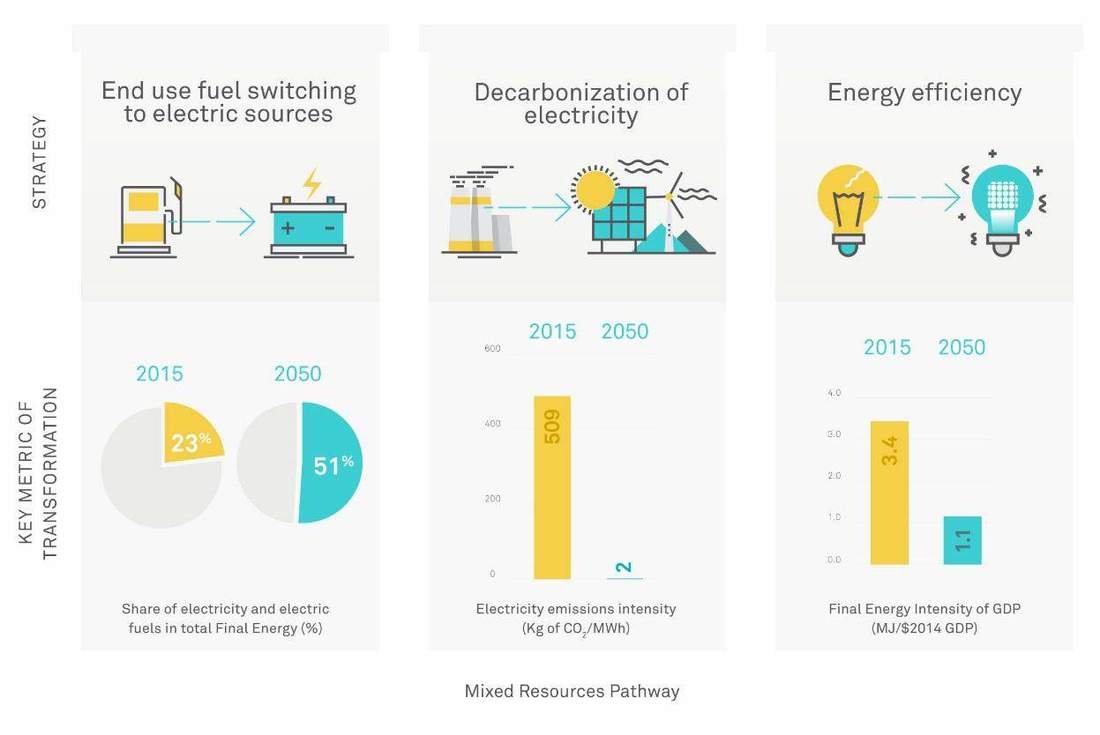

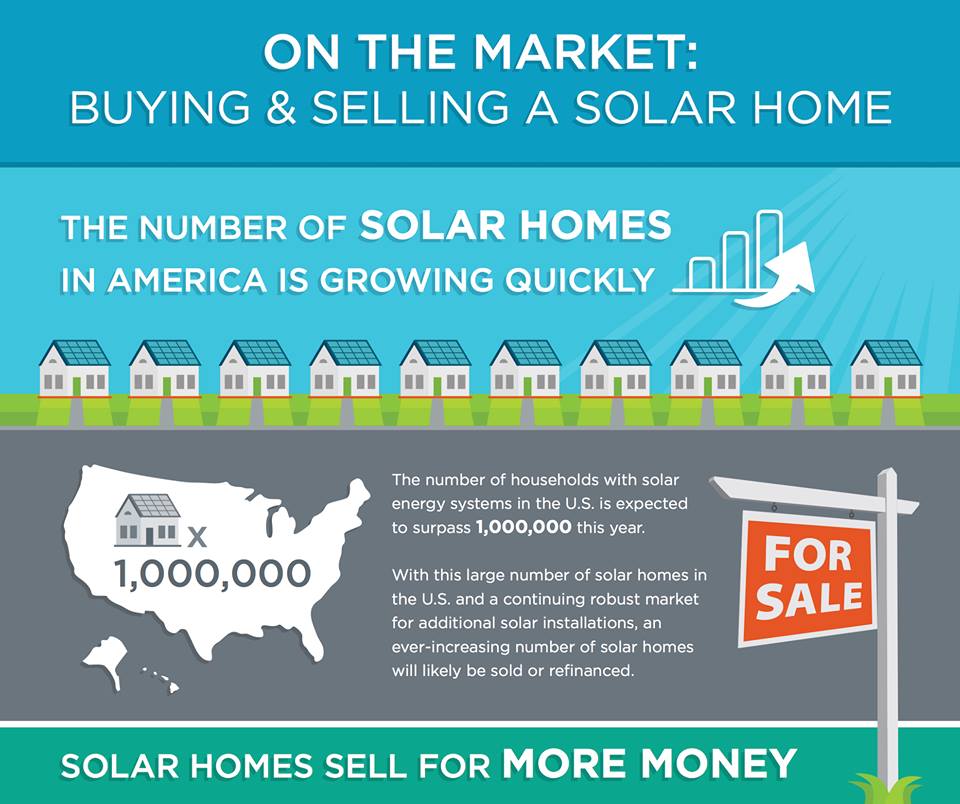
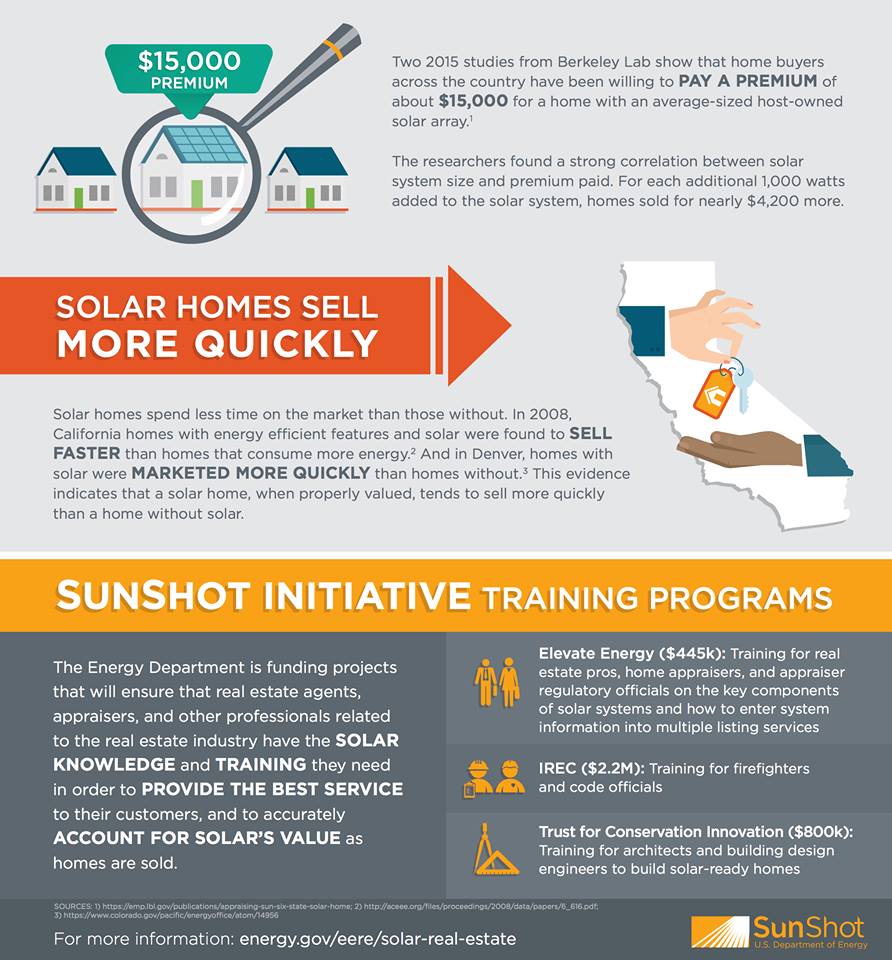
 RSS Feed
RSS Feed
